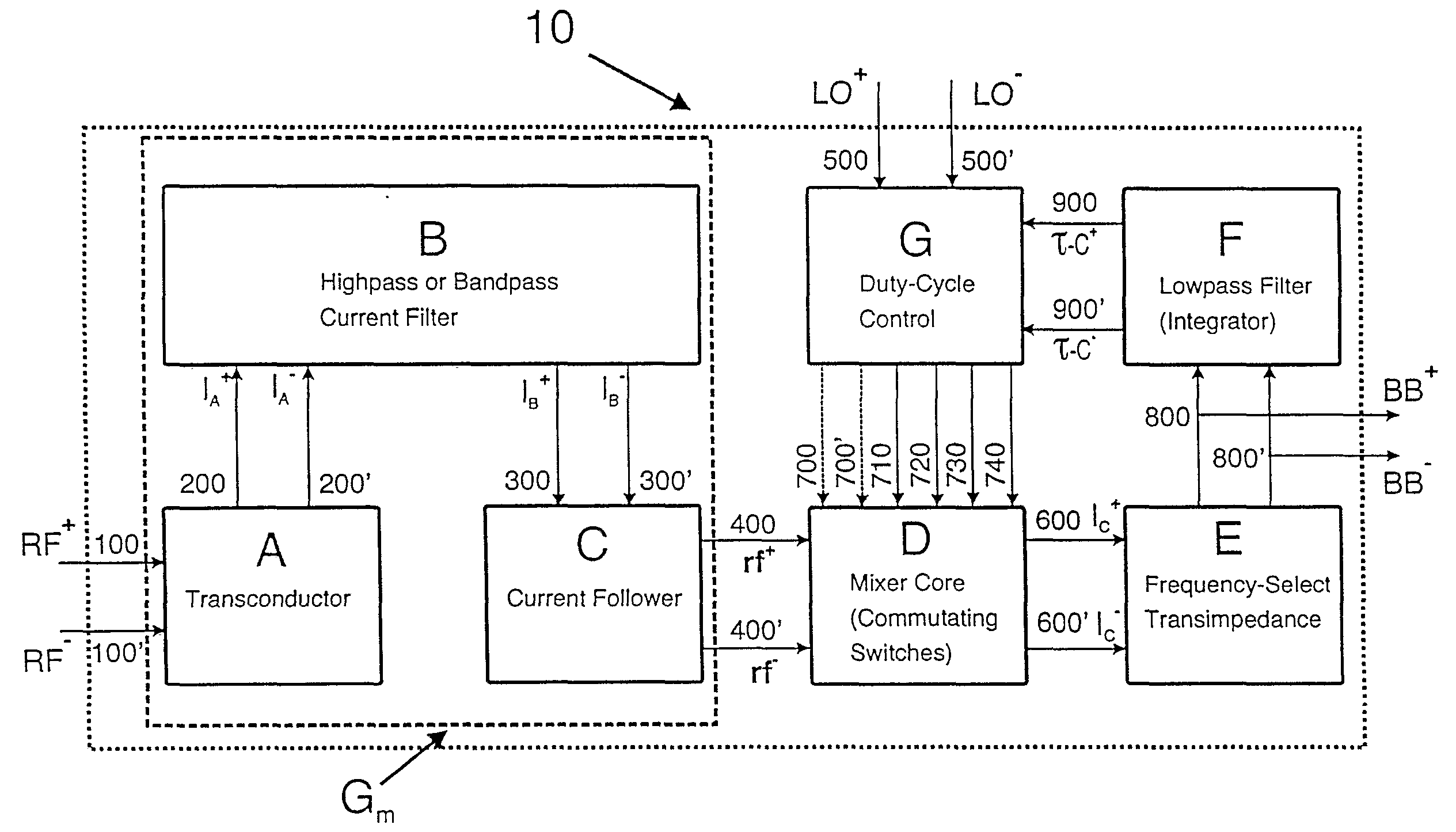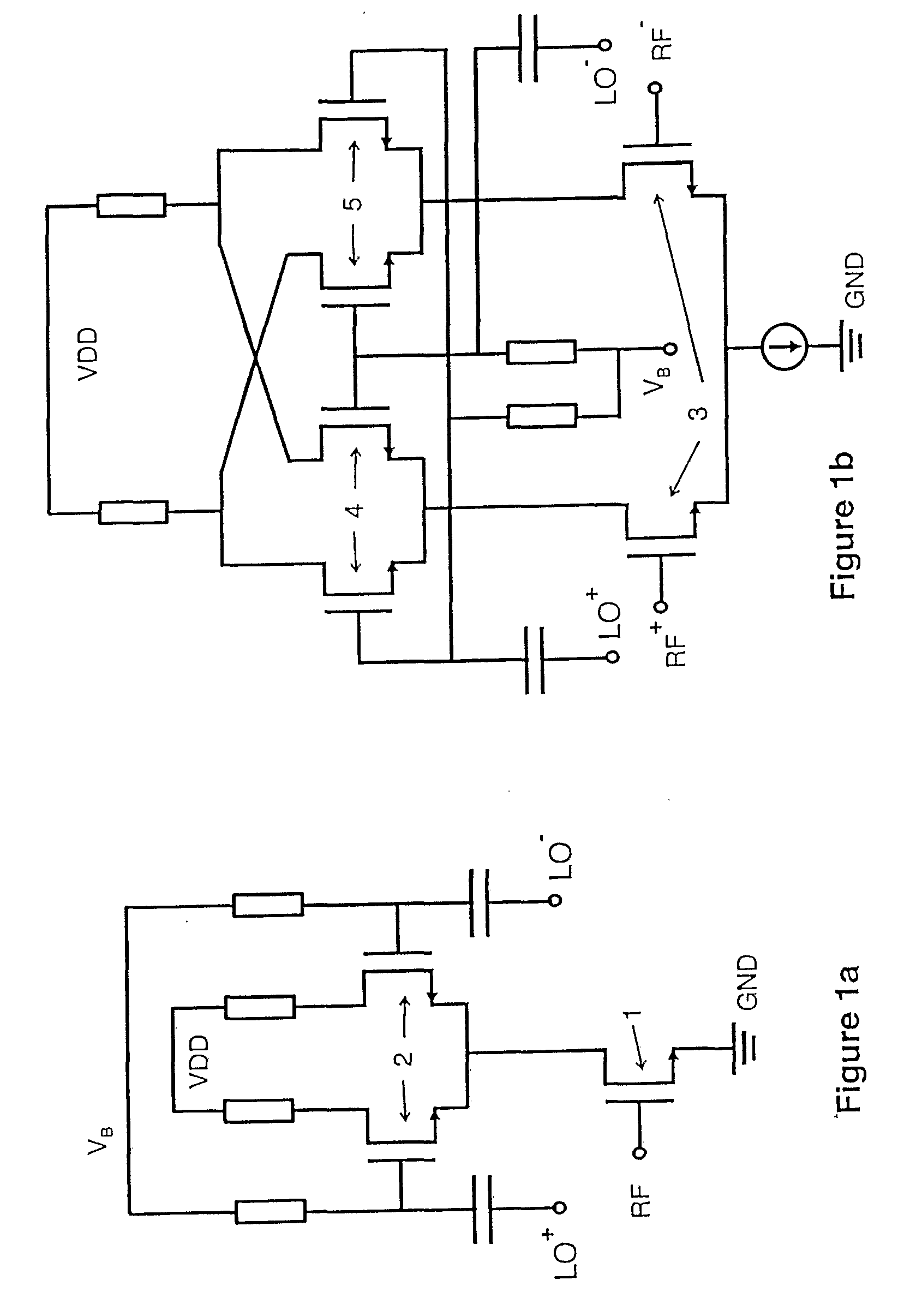Circuits
a circuit and circuit technology, applied in the field of double balanced mixers, can solve the problems of affecting the detection of the desired signal in zero-if (direct conversion), and reducing the detection efficiency of the desired signal
- Summary
- Abstract
- Description
- Claims
- Application Information
AI Technical Summary
Benefits of technology
Problems solved by technology
Method used
Image
Examples
Embodiment Construction
[0041] In the preferred embodiment, a mixer circuit in accordance with the invention comprises, as shown in FIG. 2, a transconductor A, a passive two-port network B, a current follower C, a mixer core D, a transimpedance stage E, a lowpass filter F and a duty-cycle control block G. In summary the mixer circuit operates as follows.
[0042] At its boundary the overall mixer circuit 10 has a first overall input port RF, a second overall input port LO and an overall output port BB. The input port RF receives the radio frequency signal carrying the information to be frequency-shifted—it will, of course also receive any blocking signal present. The input port LO receives a local oscillator signal. The output port BB provides the frequency-shifted output signal.
[0043] The input port RF is provided by the input of transconductor A. The transconductor A converts the received RF signal into a differential RF current at its output. That differential RF current enters the input port of passive ...
PUM
 Login to View More
Login to View More Abstract
Description
Claims
Application Information
 Login to View More
Login to View More - R&D
- Intellectual Property
- Life Sciences
- Materials
- Tech Scout
- Unparalleled Data Quality
- Higher Quality Content
- 60% Fewer Hallucinations
Browse by: Latest US Patents, China's latest patents, Technical Efficacy Thesaurus, Application Domain, Technology Topic, Popular Technical Reports.
© 2025 PatSnap. All rights reserved.Legal|Privacy policy|Modern Slavery Act Transparency Statement|Sitemap|About US| Contact US: help@patsnap.com



